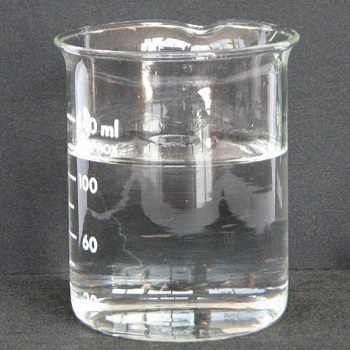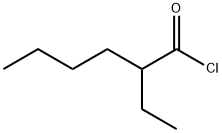2-Methylbutane
Synonym(s):2-Methylbutane;Isopentane;iso-Pentane, Isopentane
- CAS NO.:78-78-4
- Empirical Formula: C5H12
- Molecular Weight: 72.15
- MDL number: MFCD00009338
- EINECS: 201-142-8
- SAFETY DATA SHEET (SDS)
- Update Date: 2025-12-17 09:49:53

What is 2-Methylbutane?
Description
2-Methylbutane is an alkane that is butane substituted by a methyl group at position 2. It has a higher BP than butane because, although similarly branched, it has a higher MW. A useful analogy for comparing molecules with the same size of longest chain is that of cylindrical-shaped molecules. It has a role as a refrigerant. Biological samples flash frozen for example with a combination of liquid nitrogen and methylbutane can then be used for storage, cryosection, etc.
Chemical properties
2-Methylbutane (isopentane), C5H12, is a flammable liquid and exhibits physical properties very similar to those of pentane. It has been detected in urban air.
Physical properties
Clear, colorless, watery, very flammable liquid with a pleasant odor. Evaporates quickly when spilled. An odor threshold concentration of 1.3 ppmv was reported by Nagata and Takeuchi (1990).
The Uses of 2-Methylbutane
2-Methylbutane is used as a chemical intermediate. It acts as a blowing agent for polystyrene and gasoline additive. It is used as a solvent of polyethylene and involved in the preparation of polystyrene foam and polyurethane foam. Further, it is used in a closed loop in geothermal power production to operate turbines. In addition to this, it is used to freeze biological samples like tissues in place of dry ice for cryosectioning in histology.
What are the applications of Application
2-Methylbutane is a hydrocarbon used in flash freezing. Isopentane is an organic, branched-chain alkane with five carbon atoms. 2-Methylbutane undergoes catalytic dehydrogenation in the presence of chromia-alumina catalyst to form isoamylenes, which can undergo further dehydrogenation to form isoprene. It may also be used as a solvent in the preparation of trans-Bis(triethylphosphine) (hydroxy carbonyl) (phenyl) platinum(II), a metallacarboxylic acid.
Definition
ChEBI: 2-methylbutane is an alkane that is butane substituted by a methyl group at position 2. It has a role as a refrigerant.
Production Methods
Isopentane is produced by fractional distillation of natural gas liquids and crude oil.
Preparation
2-Methylbutane was synthesized by liquid-phase catalytic isomerization at 95°C using pentane as raw material.
General Description
Watery colorless liquid with a gasoline-like odor. Floats on water. Flammable, irritating vapor is produced. Boiling point is 82°F.
Air & Water Reactions
Highly flammable. Insoluble in water.
Reactivity Profile
2-Methylbutane is a fire and explosion hazard when in contact with oxidizing agents. .
Health Hazard
Inhalation causes irritation of respiratory tract, cough, mild depression, irregular heartbeat. Aspiration causes severe lung irritation, coughing, pulmonary edema; excitement followed by depression. Ingestion causes nausea, vomiting, swelling of abdomen, headache, depression.
Fire Hazard
Behavior in Fire: Highly volatile liquid. Vapors may explode when mixed with air.
Flammability and Explosibility
Extremely flammable
Safety Profile
Mddly toxic and narcotic by inhalation. See also PENTANE. Flammable liquid. A very dangerous fire and explosion hazard when exposed to heat, flame, or oxidzers. Keep away from sparks, heat, or open flame; can react with oxidizing materials. To fight fire, use foam, CO2, dry chemical. When heated to decomposition it emits acrid smoke and irritating fumes.
Source
A constituent in gasoline. Harley et al. (2000) analyzed the headspace vapors of three
grades of unleaded gasoline where ethanol was added to replace methyl tert-butyl ether. The
gasoline vapor concentrations of 2-methylbutane in the headspace were 24.1 wt % for regular
grade, 24.8 wt % for mid-grade, and 26.0 wt % for premium grade.
Schauer et al. (2001) measured organic compound emission rates for volatile organic
compounds, gas-phase semi-volatile organic compounds, and particle-phase organic compounds
from the residential (fireplace) combustion of pine, oak, and eucalyptus. The gas-phase emission
rate of 2-methylbutane was 5.6 mg/kg of pine burned. Emission rates of 2-methylbutane were not
measured during the combustion of oak and eucalyptus.
California Phase II reformulated gasoline contained 2-methylbutane at a concentration of 79.2g/kg. Gas-phase tailpipe emission rates from gasoline-powered automobiles with and without
catalytic converters were 3.69 and 148 μg/km, respectively (Schauer et al., 2002).
Environmental Fate
Photolytic. When synthetic air containing gaseous nitrous acid and 2-methylbutane was exposed
to artificial sunlight (λ = 300–450 nm), acetone, acetaldehyde, methyl nitrate, peroxy-acetal
nitrate, propyl nitrate, and pentyl nitrate were formed (Cox et al., 1980).
Based upon a photooxidation rate constant of 3.90 x 10-12 cm3/molecule?sec with OH radicals in
summer daylight, the atmospheric lifetime is 36 h (Altshuller, 1991). At atmospheric pressure and
300 K, Darnall et al. (1978) reported a rate constant of 3.78 x 10-12 cm3/molecule?sec for the same
reaction.
Cox et al. (1980) reported a rate constant of 5.0 x 10-11 cm3/molecule?sec for the reaction of
gaseous 2-methylbutane with OH radicals based on a value of 8 x 10-12 cm3/molecule?sec for the
reaction of ethylene with OH radicals.
Chemical/Physical. Complete combustion in air produces carbon dioxide and water vapor.
2-Methylbutane will not hydrolyze because it does not contain a hydrolyzable functional group.
Purification Methods
Stir isopentane for several hours in the cold with conc H2SO4 (to remove olefinic impurities), then wash it with H2O, aqueous Na2CO3 and H2O again. Dry it with MgSO4 and fractionally distil it using a Todd column packed with glass helices. Material transparent down to 180nm is obtained by distilling from sodium wire, and passing through a column of silica gel which had previously been dried in place at 350o for 12hours before use. [Potts J Phys Chem 20 809 1952, Beilstein 1 IV 320.]
Properties of 2-Methylbutane
| Melting point: | -160 °C |
| Boiling point: | 30 °C(lit.) |
| Density | 0.62 g/mL at 25 °C(lit.) |
| vapor density | 2.6 (vs air) |
| vapor pressure | 11.17 psi ( 20 °C) |
| refractive index | n |
| Flash point: | −51 °C |
| storage temp. | 2-8°C |
| solubility | 0.048g/l |
| form | Liquid |
| pka | >14 (Schwarzenbach et al., 1993) |
| color | Clear colorless |
| Odor | gasoline-like odor |
| Odor Threshold | 1.3ppm |
| explosive limit | 1.3-7.6%(V) |
| Water Solubility | Miscible with water, hydrocarbons, oils, alcohol and ether. |
| λmax | λ: 192 nm Amax: 1.00 λ: 210 nm Amax: 0.30 λ: 220 nm Amax: 0.07 λ: 240-400 nm Amax: 0.01 |
| BRN | 1730723 |
| Henry's Law Constant | (atm?m3/mol):
1.24 at 25 °C (approximate - calculated from water solubility and vapor pressure) |
| Exposure limits | ACGIH TLV: TWA 600 ppm (adopted). |
| Dielectric constant | 1.8(20℃) |
| Stability: | Stable. Extremely flammable. Incompatible with strong oxidizing agents. Vapour-air mixtures explosive in certain proportions. Incompatible with rubber, various plastics. The vapour, being heavier than air, may roll over surfaces and collect in low points. Note low flash point. |
| CAS DataBase Reference | 78-78-4(CAS DataBase Reference) |
| NIST Chemistry Reference | Butane, 2-methyl-(78-78-4) |
| EPA Substance Registry System | 2-Methylbutane (78-78-4) |
Safety information for 2-Methylbutane
| Signal word | Danger |
| Pictogram(s) |
 Flame Flammables GHS02  Exclamation Mark Irritant GHS07  Health Hazard GHS08  Environment GHS09 |
| GHS Hazard Statements |
H224:Flammable liquids H304:Aspiration hazard H336:Specific target organ toxicity,single exposure; Narcotic effects H411:Hazardous to the aquatic environment, long-term hazard |
| Precautionary Statement Codes |
P210:Keep away from heat/sparks/open flames/hot surfaces. — No smoking. P233:Keep container tightly closed. P273:Avoid release to the environment. P331:Do NOT induce vomiting. P301+P310:IF SWALLOWED: Immediately call a POISON CENTER or doctor/physician. P403+P233:Store in a well-ventilated place. Keep container tightly closed. |
Computed Descriptors for 2-Methylbutane
2-Methylbutane manufacturer
New Products
4,4-Difluoropiperidine hydrochloride tert-butyl 9-methoxy-3-azaspiro[5.5]undecane-3-carboxylate Indole Methyl Resin N-Isopropylurea N,N-Dicyclohexylcarbodiimide(DCC) MELDRUMS ACID 5-METHYLISOXAZOLE-4-CARBOXYLIC ACID Magnessium Bis glycinate Zinc ascorbate 1-bromo-2-butyne 2-acetamidophenol 9(10H)-anthracenone Erythrosin B, 4-Piperidinopiperidine 2-((4-morpholinophenylamino) (methylthio) methylene) malononitrile 2,4-dihydroxybenzaldehyde 3-(4-morpholinophenylamino)-5-amino-1H-pyrazole-4-carbonitrile Methyl 2-methylquinoline-6-carboxylate 2,6-dichloro-4-nitropyridine 4-Bromo-2-chlorobenzonitrile 2-(benzylamino)acetic acid hydrochloride 4-(tert-Butoxycarbonylamino)but- 2-ynoic acid 3,4-dihydro-2H-benzo[b][1,4]dioxepine 1-Phenyl-1-cycloprppanecarboxylicacidRelated products of tetrahydrofuran








You may like
-
 78-78-4 2-Methyl-butane 98%View Details
78-78-4 2-Methyl-butane 98%View Details
78-78-4 -
 2-Methylbutane CAS 78-78-4View Details
2-Methylbutane CAS 78-78-4View Details
78-78-4 -
 2-Methylbutane CAS 78-78-4View Details
2-Methylbutane CAS 78-78-4View Details
78-78-4 -
 Isopentane CAS 78-78-4View Details
Isopentane CAS 78-78-4View Details
78-78-4 -
 Isopentane, GR 99%+ CAS 78-78-4View Details
Isopentane, GR 99%+ CAS 78-78-4View Details
78-78-4 -
 2-Methylbutane CAS 78-78-4View Details
2-Methylbutane CAS 78-78-4View Details
78-78-4 -
 iso-Pentane 99% AR CAS 78-78-4View Details
iso-Pentane 99% AR CAS 78-78-4View Details
78-78-4 -
 iso-Pentane 98% For Synthesis CAS 78-78-4View Details
iso-Pentane 98% For Synthesis CAS 78-78-4View Details
78-78-4
